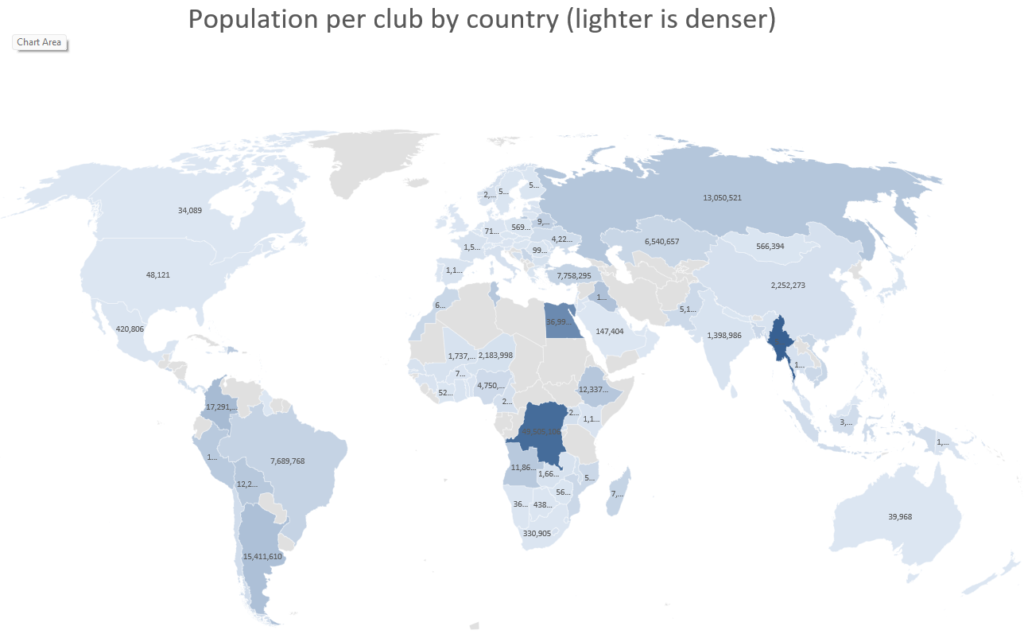Do you think your part of the world simply cannot support any more Toastmasters clubs, that there’s too many clubs already, and new clubs just take members away from existing clubs?
Well, if you live in Bahrain, New Zealand, Qatar, or Singapore, you might be right. Anywhere else in the world, you can look to those four countries for an example of being able to build even more Toastmasters clubs.

Looking at just the 27 countries with at least 60 clubs (the minimum for a district), Bahrain has the most clubs per capita, with 74 clubs for 1.5 million people — a club for every 19,895 people. New Zealand follows with a club for every 20,174 people, then Qatar at 23K, and Singapore at 25K. (Smaller numbers mean higher density, more clubs for the population.)
At the other end, we have Indonesia, with 71 clubs for 276M people, or one club for every 3.9M people, followed by China at one club for every 2.3M people, and India at one club for every 1.4M people. And no great surprise, this is where much of the growth is happening!
The United States, the home country of Toastmasters, has one club for every 48K people, and Canada has one for every 34K people.
If we look outside the countries with lots of clubs already, we have Sint Maarten (in the Caribbean) with 12 clubs for just 43K people — one club for every 3,616 people! Many other Caribbean islands have almost as amazing numbers, with Montserrat at one club for every 4,992 people, Bonaire at 5,026, Curacao at 6,818, and more.
Zooming in to the U.S. state and Canadian province level (where 52% of the clubs are), the District of Columbia is in the lead for club density, with 97 clubs for 713K people, or one club for every 7,349 people. (This may be in part due to people living outside the District, but working in and joining clubs in the District.) The first actual state is Hawaii, with 68 clubs for 1.4M people, or one club for every 21K people, followed by Manitoba at 22K, British Columbia at 24K, and Minnesota at 27K.
The states and provinces with the lowest density (and biggest growth opportunity) are West Virigina with just 3 clubs for 1.8M people, or one club per 591K people, then Newfoundland with 2 clubs for 529K people or one club per 264K, Puerto Rico (15 clubs) at one club per 218K, and Kentucky at 156K. If West Virigina had the same number of clubs for 1.8M people as is the national average, that would be 33 more clubs!
California has the most clubs (1,261 clubs), of course, with one club per 31K people, and Texas (593 clubs) has the next most, at one club per 49K people. The Canadian province with the most clubs is Ontario (513 clubs), at one club per 30K people.
So, the next time someone tells you there’s no room for more clubs – consider the examples you can find in the rest of country, the rest of the world. Grab a map of your locality, plot out where the existing community clubs are, and identify gaps between them where there are people who would benefit from a new Toastmasters club.
For more details on your country and state or province, see the attached spreadsheet.